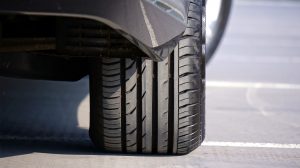If you’re replacing the tires on your vehicle, you’ll need to know their size, diameter, and any other important information. Here’s a quick guide for how to read tire sizes so that you can purchase the right tires for your car.
Tire Type
First, locate the sequence of numbers and letters on the sidewall of your tire. This will be the same on all four of your tires. The sequence you’re looking for should read something like “P245/50R20 102V.” The first part of this sequence is a letter that represents the type of tire you have. In this example, the letter is P, which stands for “passenger” and signifies that the tires are inspected according to federal safety standards for passenger vehicles.
Tire Width
Next, you need to find the tire width, which is shown in millimeters. Looking at the same number sequence, locate the three-digit number directly following the tire type. In the example “P245/50R20 102V,” the number indicating the tire width is 245. This tells you how wide your vehicle’s tires need to be to fit onto the wheels.
Aspect Ratio
The aspect ratio is the height of the tire’s sidewall, and you can find this number right after the slash and before the letter R in the sequence. In “P245/50R20 102V,” the aspect ratio is 50. This means that the height of the tire equals 50% of the width, so the bigger the aspect ratio, the bigger the sidewall.
Construction
The letter R in the example “P245/50R20 102V” stands for “radial,” which means that the tire’s layers were constructed to run radially throughout the tire. Another example of a tire construction designation is the letter D, which represents tires built with diagonal layers. Typically, though, you’ll see R for passenger vehicle tires.
Wheel Diameter
The wheel diameter comes next and is important to know because it essentially tells you what size tires will fit onto your rims. Look for the number that follows the letter R in the sequence. For the tire size “P245/50R20 102V,” the wheel diameter is 20. This means that the tires need to fit 20-inch wheels.
Load Index
The load index tells you the maximum weight the tires can support. The load index number comes after the wheel diameter. In “P245/50R20 102V,” the number 102 represents the load index, and you can look for that number on a standard chart to find out how many pounds it refers to. In this case, this tire can support 1,874 pounds.
Speed Index
The speed index represents a specific maximum speed that your tires can handle. To learn your speed index, find the letter that comes after the load index at the end of the sequence. In the example of “P245/50R20 102V,” the V represents a specific maximum speed of 149 miles per hour. Different letters represent different maximum speeds, such as H for a maximum of 130 miles per hour.
Now that you know how to read your tire size, you’ll know exactly what to look for when you purchase new tires for your vehicle. For additional information about new vehicle tires and installation, stop by Rochester Mazda today.




